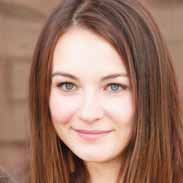A World Of Art Ch. 4-6 – Flashcards
Unlock all answers in this set
Unlock answersquestion
a mark left by a moving point, actual or implied, and varying in direction, thickness, and density
answer
line
question
the edge of a shape of figure depicted by an actual line drawn of painted on the surface
answer
outline
question
the perceived line that marks the border of an object in space. Describing dimension by overlap
answer
contour line
question
a line created by movement or direction, such as the line established by a pointed finger, the direction of a glance, of a body moving through space.
answer
implied line
question
empty space surrounded and shaped so that it acquires a sense of form or volume
answer
negative shape
question
the figure that commands our attention
answer
positive shape
question
a version of linear perspective In which there is only one vanishing point
answer
One point linear perspective
question
the point on the horizon line where parallel lines converge.
answer
vanishing point
question
the point where the viewer is positioned
answer
vantage point
question
when lines recede to a vanishing point across from the vantage point
answer
frontal recession
question
when the lines recede to a vanishing pint to the right or left of the vantage point
answer
diagonal recession
question
a version of linear perspective when there are two vanishing points on the horizon line
answer
two point perspective
question
a system for projecting space, commonly found in Japanese art, in which the front of the object of building is parallel to the picture plane, and the sides, receding at an angle, remain parallel to each other rather than converging.
answer
oblique projection
question
a technique for depicting space in which all lines remain parallel rather than receding to a common vanishing point
answer
axonometric projection
question
modification of perspective to decrease distortion resulting from the apparent visual contraction of an object or figure as it extends backwards from the picture plane at an angle approaching the perpendicular
answer
foreshortening
question
a technique, often employed in landscape painting, designed to suggest three-dimensional space of the picture plane, and in which forms and objects distant from the Inset become less distinct, often bluer and cooler in color, and contrast among the various distant elements is reduced
answer
Atmospheric/(aerial) perspective
question
the use or light and dark to create the effect of 3D modeled surfaces
answer
Chiaroscuro
question
A heightened form of chiaroscuro
answer
tenebrism
question
An area of closely spaced parallel lines to create the effect of shading or modeling
answer
hatching
question
Two or more sets of roughly parallel lines and overlapping lines, set at an angle to one another, in order to create a sense of three-dimensional modeled space
answer
cross-hatching
question
A color or hue modified by the addition of another color, resulting in a hue of a darker value
answer
shade
question
A color or hue modified by the addition of another color, resulting in a hue of a lighter value
answer
tint
question
directly reflect the light source, indicated by white
answer
highlights
question
unlighted surface of a form rendered by modeling or chiaroscuro
answer
shadow
question
the darkest area on the object itself
answer
core of the shadow
question
the darkest are of all
answer
cast shadow
question
the three hues that cannot be created from a mixture of other hues (red, blue, yellow)
answer
primary colors
question
hues created by combining two primary colors (orange, green, violet)
answer
secondary colors
question
hues created when combining one primary and one secondary color
answer
intermediate colors
question
when different hues are combined, the mixture is duller and closer to black
answer
subtractive process
question
when different hues are combined, the mixture is bright and closer to white
answer
additive process
question
a color
answer
hue
question
reltive purity of a color's hue, a function of its relative brightness or dullness
answer
intensity/saturation
question
a liquid that makes paint easier to manipulate
answer
medium
question
schemes composed of hues that neighbor eachother on the color wheel
answer
analogous color
question
relative warmth or coolness of a given hue
answer
temperature
question
schemes that employ hues that lie on opposite sides of the color wheel
answer
complementary color
question
the more intense, brighter effect after placing complementary colors together without mixing
answer
simultaneous contrast
question
the actual hue of something, independent of the ways in which colors might be mixed or how different conditions of light and atmosphere might affect color
answer
local color
question
colors as perceived by the eye
answer
perceptual color
question
painting done outside rather than studio
answer
plein-air painting
question
color that has no realistic or natural relation to the object that is depicted but may have emotional or exprssive significance
answer
arbitrary color



